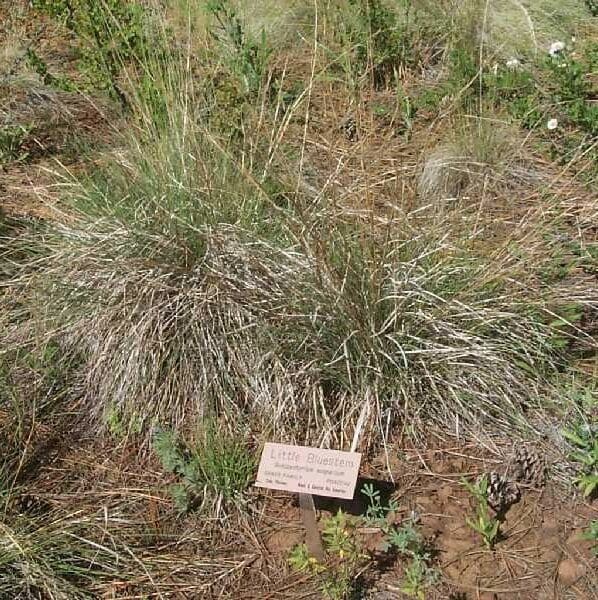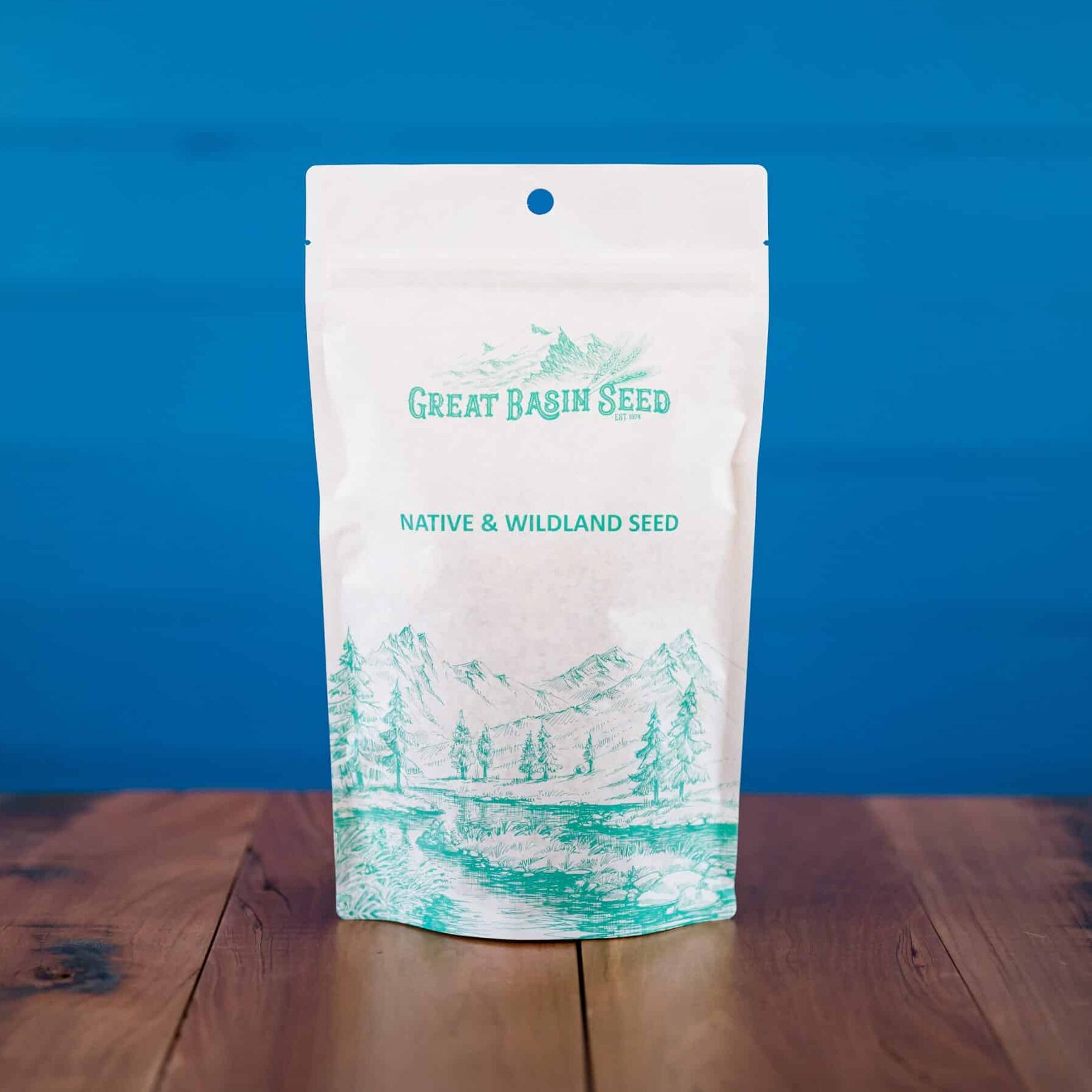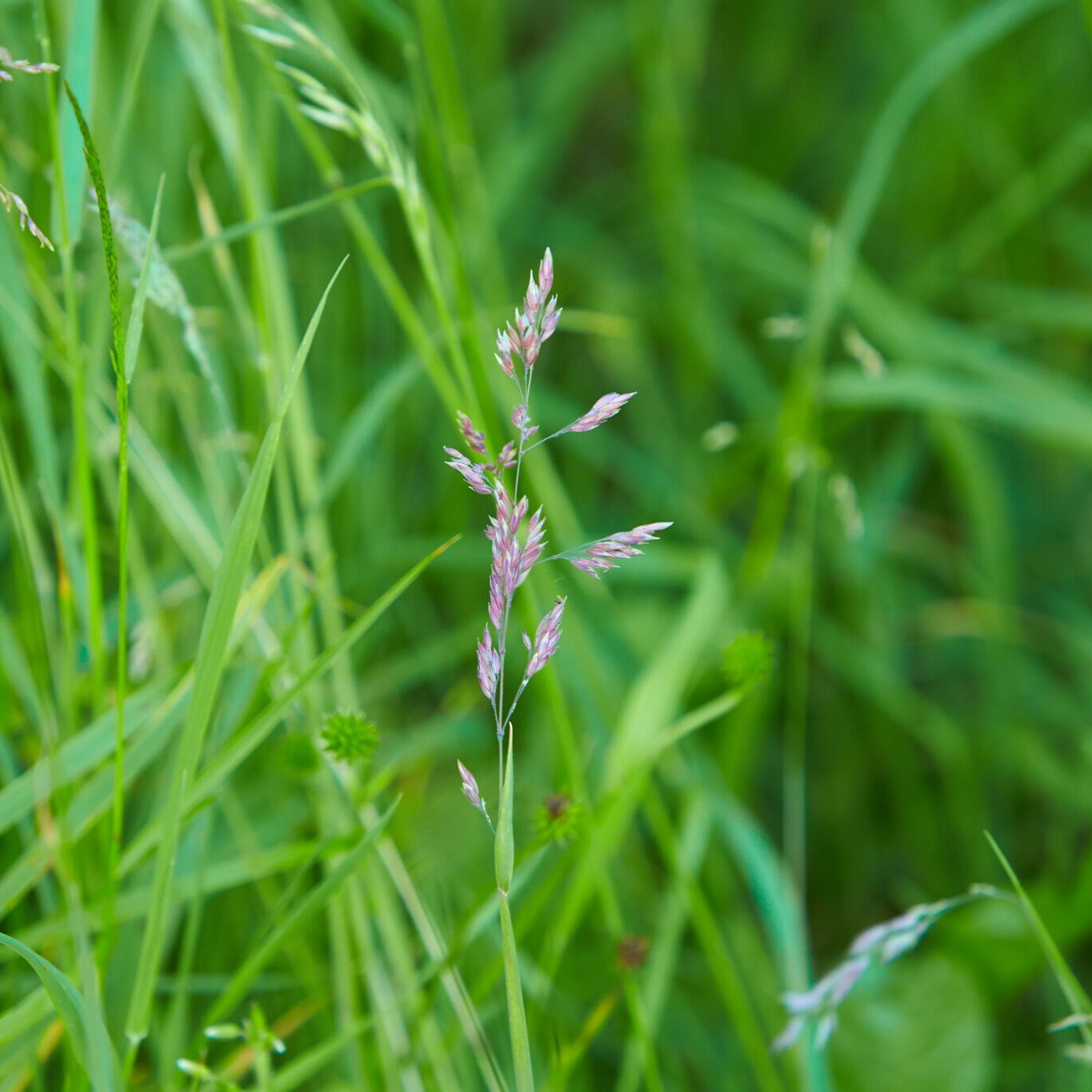Little bluestem (Schizachyrium scoparium) is a tufted, warm-season, perennial grass broadly distributed and native to the U.S. and Canada. Found throughout the lower provinces of Canada and all states of the U.S., except Nevada and Washington. Little Bluestem seed is one of the most widely distributed native grasses in North America. It will grow on a wide variety of soils but is very well adapted to well-drained, medium to dry, infertile soils. The plant has excellent drought and fair shade tolerance, and fair to poor flood tolerance. It grows preferentially on sites with pH 7.0 and slightly higher. It begins growth in late spring after cool-season species have already developed.
Because of this broad distribution, little bluestem exhibits significant ecotypic variation. Plants vary in height, color, length of leaves, flowering, and clump diameter. It grows from 1 to 3 feet tall with culms slightly flattened. As a warm season grass it begins growth in late spring and continues through the hot summer period until the first killing frost. Typically occurs on dry upland sites, especially on ridges, hilltops, and steep slopes. Also occurs on limey subirrigated sites and in prairie fens. It is found in areas receiving 10 to 60 inches of mean annual precipitation and plant hardiness zones 3 to 9.
Little bluestem (Schizachyrium scoparium) should be seeded as early in the spring as possible. Where no-till is used due to slope, stoniness, or other reasons, sod control should be performed in the fall to permit early spring planting. The seeding rate for establishing a pure stand with broadcast or no-till methods should be 7 to 12 pounds PLS per acre. When the seed is broadcast, best results can be expected when a packer is utilized to firm the seedbed. Plant 1/4 to 1/2 inch (3/4 inch on very droughty sites). Seedings should be made as early as possible in the spring on sands and gravels, without mulching.
Uses
- Pasture
- Rangeland
- Prairie restoration
- Erosion Control
- Wildlife
- Landscaping
- Enthobotany
Pasture/range/hayland: Little bluestem (Schizachyrium scoparium) is a fair forage species and is readily grazed by livestock, deer, and elk. It is also suitable for hay. This species provides fair to good forage while young. It is rated fair for cattle and horses, but is usually too coarse for sheep and goats. Crude protein is 12 to 14 percent in May, dropping off considerably in July through September to less than 4 percent.
Erosion control: Because of its growth habit and adaptability to a wide range of soil conditions, little bluestem is useful as a component of revegetation mixes. Especially well-suited for use on thin upland range sites. Deep-rooted, and somewhat slow to establish from seed.
Wildlife: Songbirds and upland gamebirds eat Little Bluestem. The plant provides cover for ground birds and small mammals. Little bluestem is one of the best grasses for nesting and roosting habitat.
Landscaping: With its blue-green leaves during the growing season and attractive rusty color with white fluffy seed heads in the fall, little bluestem is useful in ornamental plantings. Little bluestem is becoming more popular for home landscaping because it is a colorful and easy-care addition. Frost accents the plants and the reddish tint provides color during the winter. This is a prairie grass for the garden that is truly exceptional in mass plantings. Use in full sun.
Prairie Restoration: Used extensively in prairie restoration projects primarily because of its adaptation to a diversity of sites, drought tolerance, growth habit, and wildlife appeal.
***Click on the “Quick Plant Facts” tab above for more information.
Slender Little Bluestem NRCS Plant Guide and Fact Sheet
Slender Little Bluestem NRCS Plant Guide and Fact Sheet
PDF version of NRCS Plant Guide and Fact Sheet
Prepared By & Species Coordinator: Percy Magee, USDA NRCS National Plant Data Center, Baton Rouge, Louisiana
Helpful Links
Additional information about this product can be found on the academic websites linked below.
Synonyms
Many plants have more than one common and scientific name. We've listed a few of them below.
- Little Bluestem
- Schizachyrium scoparium
Who is Great Basin Seed?
Great Basin Seed is a seed company that specializes in seed sales and consultation for home, ranch, farm, range and reclamation. We have been a leader in the seed industry since 1974.
Our History
We've been in the seed business since 1974.
What We Offer
We offer seed for home, farm, ranch, range and reclamation projects.
Meet the Gang
We have the best employees in the world! We are proud of the work they do, and trust them to serve you!
Right: Company founder Lloyd and his wife Paula Stevens in a wildflower seed production field circa 1977
Quick Plant Facts
| Available Varieties: | |
|---|---|
| Scientific Name: | |
| Elevation of Occurance: | |
| Origin: | |
| Lifespan: | |
| pH Tolerance: | |
| Plant Height: | |
| Plant Type: | |
| Min. Precipitation: | |
| Growth Season: | |
| Seeds per Pound: | |
| Max Sowing Depth: | |
| Planting Rate: | |
| Best Time to Sow: | |
| Sun & Shade Tolerance: | Full Sun |
| Root Form: | |
| Hardiness Zones: | |
| Select a Package Size and Quantity | 8 oz. Pouch (0.50 lbs.), 1 lb. (by the pound) |








